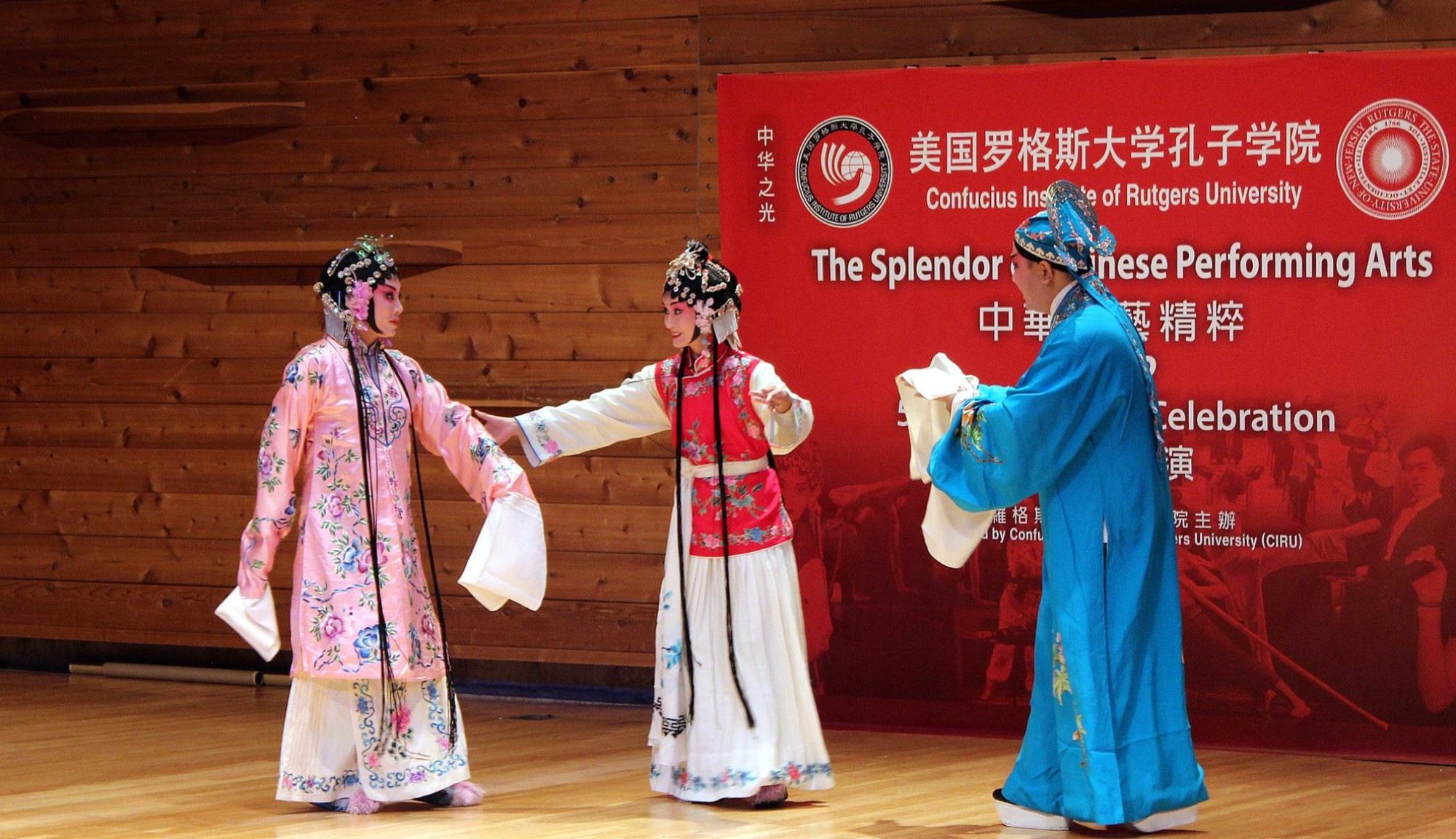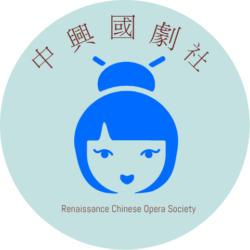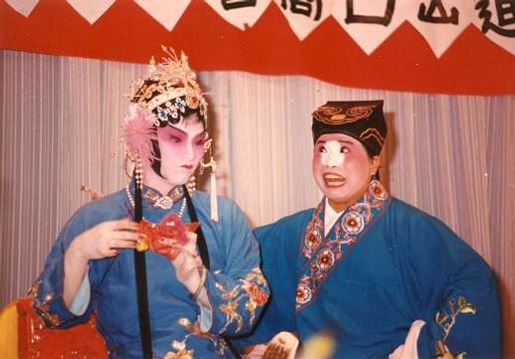Peking Opera is one of the most popular forms of Chinese Opera, which is largely influenced by the imperial Qing dynasty over 200 years ago. Peking Opera started on Emperor Qianlong’s 80th birthday, when four of the popular Chinese Opera troupes came to Beijing. They learned from each other and formed the Peking opera. Master Mei Lan-Fang(梅蘭芳) was one of the most famous Peking Opera artists in modern Chinese theater. Master Mei was the first artist to spread Peking Opera to international market. His contribution to Chinese Opera has spread the interest of studying Chinese opera outside of China. Each object on stage and each movement can represent different meanings. For example, a table on stage is not just a table; it can represent something else. Each body movement represents different meanings. To fully appreciate Peking Opera, you must understand the meaning of each object and performance technique. There is a profound knowledge in Peking Opera. For someone who does not understand the art, he/she can still appreciate the fancy costumes and enjoy the show.
Peking Opera characters are divided into 4 different categories. Sheng 生, Dan 旦, Jing 净 , and Chou 丑.
Sheng 生 is main male role. Characters such as Xu Xian 許仙 is xiao (young) sheng 小生, Zhu Ge Liang 諸葛亮 is lao (old) sheng 老生, Wu Song 武松 is wu (fighter) sheng 武生.
Dan 旦 is any female role. Hua (flower) Dan 花旦 refers to lady who is never married. QingYi 青衣 refers to virtuous and elite women. Usually this character is dressed in black. Empress Yang is also QingYi, but because of her status she wears a luxurious dress. On stage, QingYi usually sings with little talking. Wu (fighter) Dan武旦 is a female character who knows Kung Fu. Lao (old) Dan 老旦 refers to an older lady.
Jing 净 is a painted face male role. There are 3 main types Jing characters. Tongchui 銅錘花臉 is heavily involved in singing , jiazi架子花臉 roles involve little singing and more physical acts, and wujing 武花臉 roles less singing and more martial art and acrobatic performances.
Chou 丑 is a male clown role. Chou roles can be divided into Wen Chou 文丑, civilian roles such as merchants and jailers, and Wu Chou 武丑, minor military roles. Chou character needs to have a good strong voice. Usually this type of character uses tricks, comic moves, and acrobatics to display the nature of this character.
The above characters can be identified by their social statuses and by the way they dress. The audience can easily identify the social status by their costumes. In Chinese Opera, male characters use beards to show age. They use different movements of the beard to show different types of emotions, such as anger, nervousness and etc.. Usually no beard for age 20 and under, black beard for age 40, gray beard for age 60 and white beard for age 80 and above. Makeup also represents different types of character. Different vocal scales also display different types of characters. For example, Lao Sheng or Lao Dan typically uses original voice. A colorful face uses resonance voice. Xiao Sheng, QingYi, and Hua Dan typically use falsetto. There are four basic shapes for the throat and mouth, corresponding to four vowel types. The four throat and mouth shapes are “opened-mouth” (kai 開 ), “level-teeth” (qichi齊 ), “scooped-lips” (cuo 撮), and “closed-mouth” (Huo合). Chinese Opera emphasizes 6 skills and 5 methods. The six skills are singing, reading, fighting, dancing, and acrobatic. The 5 methods are hands, eyes, body, steps, and rules.
To fully appreciate Peking Opera, we have to understand 3 elements.
- Imagination or symbolism – We need to know symbols of different objects.
- Rules – We need to know the rules of different steps and body movements.
- Combination of all surrounding elements such sound effect, costumes, and body movements.
京劇形成於1790年,至今已有200多年歷史了,但要比起流傳至會有600年歷史的昆曲,京劇算是小弟弟了!但因京劇發展速度較快,能人又多,名角也很多,所以流傳至今,算是中國一大劇種了。 京劇的形成是在乾隆皇帝80歲生時之時,四大徽班進京,當時在朝廷的關注下,四大徽班相互切磋研究,形成了京劇。同光年間有個十三絕的照片,就是當時各行當的名角兒。中國戲曲,是以地方和地方語言為分界線,分出了不同的地方戲劇種。而京劇排首,京劇是中國獨有,也是世界獨有。 那麼希臘悲劇、印度梵劇及中國戲曲並稱為“三大古典戲劇.戲劇的三大藝術體糸是蘇聯的斯坦尼斯拉夫斯基的斯氏表演體系(是體驗與體現的關糸).德國的布萊希特的布氏體糸(說的是間離效果,如:念白“哎呀且住!”打背弓),中國的梅氏休糸,梅先生當年曾十四次把京劇表演藝術推向國際市場,梅大師對京劇表演藝術的傳播及傳承做出了極大的貢獻。許多國外表演藝術家中國戲曲對做出過研究,覺得中國戲曲能運用一桌兩及虛與實的表演手法來表現如此豐富的內容。京劇表演藝術也是一大體系,目前中國戲曲學院已將京劇說是京劇學了,像荀派稱荀學。話說會看戲的看門道,不會看戏的看熱鬧。學問之大啊!老前輩們太聰明了,其實京劇全有寓意的。
京劇分行當:“就是說京劇是以行當來劃分人物的,分為“生、旦、淨、醜”四大類。
生:如小生,如“許仙”.老生如:諸葛亮.,武生如:長靠武生高寵,短打武生如“武松”,如紅生“關公”,生行裡老生還分為:“唱功老生 及做工勞生,如“二進宮中楊波,是唱功老生。如“殺惜中的宋江,徐策跑城中的老徐策都屬於功夫老生。
花旦多指沒結婚的小女子,如“拾玉鐲中的孫玉 姣。 青衣:無疑,這青為黑,所以青衣多是指窮苦人家的婦女,故大都穿黑褶子,如紅鬃烈馬中的王寶釧。當然貴妃醉酒中的楊貴妃也是青衣,但她因是宮廷裡的皇娘,所以她穿著很華貴的蟒袍。青衣多以唱功為主,念白較少。
武旦如“扈三娘、孫二娘等。
老但如“岳母及釣金龜中的康氏”.
淨是指花臉,又分為“銅錘花臉和架子花臉及武花臉三種,”其中如徐延昭、包拯是銅錘花臉,以唱念為主。架子花臉如:張飛、李奎,以形體表演為主如。武花臉是扎靠有翻跟頭的角色,入關勝花旦多指沒結婚的小女子,如“拾玉鐲中的孫玉 姣。
醜分為文醜和武醜,文醜如“群英會”中的蔣幹,武醜如“三叉口”中的劉利華。醜角要有很好的嗓子。如劉利華一開場的“啊哈”!等。醜角也包括彩旦,如“拾玉鐲”中的劉媒婆等,多以滑稽的表演手法來體現人物。
以上我所講的各類不同的人是以行當劃分人物的。
在戲曲舞台上,比如皇帝、城鄉、縣官等人物,因他們的等級不同,所帶的官帽及盔頭也不同。我們一看人物的著裝便可分清人物的等級了。 戲曲舞台上男人是以鬍鬚(髯口)來劃分年齡的,鬍子的運用有很多不同的手法、手勢。有時會以鬍鬚來代替人物的內心,如生氣、緊張等,均以抖鬍鬚為主。如“女起解”中蘇三和崇公道的表演。通常二十歲以下無鬍鬚,四十歲左右帶黑色鬍鬚,六十歲左右帶灰色鬍鬚,八十歲帶白鬍子,不同顏色的鬍鬚代替不同年齡的任務。 戲曲舞台上還以臉譜標題哦啊哦表特色。不同臉譜表現不同人物。 另外,以嗓音表性格。如老生老旦多以本嗓來唱,運用共鳴來唱的是花蓮, 以真假聲結合的小生、青衣和花旦,其中小生較明顯。如“西廂記”中的張生(師範). 另外,我們戲曲演員口型的運用是很講究的的。比如我們的口型有:“開 、齊 、撮 、合 ”四種。其中“開”是“懷來轍”。“齊”是“一七轍”。“撮”是“梭波轍”。“合”是“由求轍”。舉例如旦角羅“來至在”嘴不能松散著唱。如青衣念白“啊爹爹呀”花旦念京白“青春整二八”等。 我們戲曲講“ “六功五法”了。那麼“六功”指“唱、念、做、打、舞、翻。“五法”揩““的是“手、眼、身、法、步”.一個專業戲曲演員要想掌握這些至少需在戲校經过六年的學習方可畢業。一個武生演員,學习“石秀探莊”中石秀的表演,單就拿根扁旦的橫平豎直的表演身段就需練一段時間的。接下來學“蜈蚣嶺”中武松,要練甩發、雲肘(佛塵)、刀要同時練。很辛苦。還一出“林衝夜奔”更難,要一邊唱,一邊做,那種協調性練起來很難。 旦角的身段現在也有許多,如“水袖組合,扇子組合”,手絹組合,手眼的練習,通過這些練習使演員變得更加完善!我們欣賞京劇一定要注意它的三性:一.“虚擬性”,(加以示苑),孫玉姣
二.程式性,如一个雲手,就包括不同方法。
三.綜合性:它是文學與音樂、唱陪、服裝服飾頭飾及音響音像效果。
希望大家能夠對如何欣賞京昆藝術多少有些了解!


